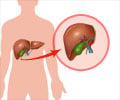New findings from two modeling studies presented at the International Liver Congress support the call to action from medical experts and patients in relation to the challenge health

Based on these forecasts, experts conclude that the development and implementation of ambitious policy strategies to ensure effective access to diagnosis and treatment alongside the availability of new therapies (such as proteases inhibitors) could have a major impact in further reducing HCV-related mortality in the future.
A second modelling study looked at French health resource allocation and how this may change with the introduction of triple therapy for non-responders in the near future. In France, the data show the number of patients eligible for treatment (treatment-naive and previous non-responders) will increase two to three folds, which equates to an additional 9,900 to 14,300 patients by 2012. This demonstrates the need to adjust allocation of health resources at national level to meet this demand.
Mark Thursz, EASL's Vice-Secretary commented: "These types of modelling studies are useful in providing us with data to support our policy efforts with political audiences. We have been saying, alongside patients, that the current challenges to managing viral hepatitis effectively are linked to a wide discrepancy in diagnosis and treatment standards across the different Member States. Now we can build a stronger case when discussing the development of effective health strategies within the EU and at Member State level. The good news is that antiviral treatments are being proven to be effective in substantially reducing HCV-related mortality in Europe. We must strengthen our efforts towards a better identification of carriers needing management and treatment."
HCV is a major cause of acute hepatitis and chronic liver disease. Globally, an estimated 130� million people are chronically infected with HCV and 3 million are newly infected each year.
Advertisement











